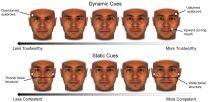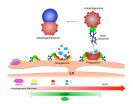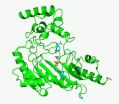Drug approved to treat osteoporosis shows promise in pre-clinical diabetes research
2015-06-18
(Press-News.org) American scientists have discovered that a drug commonly used to treat osteoporosis in humans also stimulates the production of cells that control insulin balance in diabetic mice. While other compounds have been shown to have this effect, the drug (Denosumab) is already FDA approved and could more quickly move to clinical trials as a diabetes treatment. The research is published June 18 in Cell Metabolism.
Diabetes is a major health issue worldwide that arises due to a deficiency of insulin-producing beta cells in the pancreas. In type 1 diabetes, beta cells die from a misguided attack by the body's immune system; in type 2 diabetes, the body becomes resistant to insulin and beta cells try to compensate by producing more of it, which can wear them out. Therefore, a primary goal to combat diabetes is to find ways to increase functioning beta cells; however, adult beta cells are very resistant to divide and grow.
In addressing this hurdle, investigators have discovered a link between a well-known bone-related pathway and the proliferation of pancreatic beta cells. "Our study identifies a molecular brake that inhibits both mouse and human beta cell replication," says senior author Rupangi Vasavada of the Diabetes, Obesity and Metabolism Institute at the Icahn School of Medicine at Mount Sinai in New York City. "It shows that two proteins, including an FDA-approved osteoporosis drug, can override and release this brake to induce proliferation of rodent and human beta cells."
Vasavada and her colleagues, including study first author Nagesha Kondegowda, made their discoveries by studying the effects of lactogenic hormones, which are produced by the pituitary gland, stimulate lactation in females, and are known to enhance pancreatic beta cell survival and growth. When they looked for proteins that are regulated by lactogens in beta cells, the researchers identified a bone-related protein called Osteoprotegerin (OPG). Interestingly, a search of the medical literature revealed that OPG is expressed at high levels under various conditions--such as pregnancy and obesity--that promote beta cell expansion. These findings suggest that OPG may be directly involved in beta cell growth.
OPG binds to a protein and receptor pair that affects bone turnover, lactation, and a variety of other processes. Vasavada and her team found that the pair also inhibits beta cell replication and that OPG and Denosumab, which is an antibody, both counteract this effect to stimulate beta cell proliferation. "The findings suggest that there is potential for repurposing this osteoporosis drug for the treatment of diabetes," she says.
Vasavada will next explore how Denosumab and OPG modulate beta cell growth and function. She is also interested in doing clinical trials in patients with diabetes who are also being treated for osteoporosis with Denosumab or other drugs. A 2013 study of postmenopausal women taking Denosumab found no effect on glucose metabolism for those on the drug, but more tests are needed as the participants were not diabetics.
INFORMATION:
This work was supported by grants from the National Institutes of Health and the Juvenile Diabetes Research Foundation.
Cell Metabolism, Kondegowda et al.: "Osteoprotegerin and Denosumab Stimulate Human Beta Cell Proliferation through Inhibition of the Receptor Activator of NF-κB Ligand (RANKL) Pathway" http://dx.doi.org/10.1016/j.cmet.2015.05.021
Cell Metabolism, published by Cell Press, is a monthly journal that publishes reports of novel results in metabolic biology, from molecular and cellular biology to translational studies. The journal aims to highlight work addressing the molecular mechanisms underlying physiology and homeostasis in health and disease. For more information, please visit http://www.cell.com/cell-metabolism. To receive media alerts for Cell Metabolism or other Cell Press journals, contact press@cell.com.
ELSE PRESS RELEASES FROM THIS DATE:
2015-06-18
Cutaneous melanoma, the most deadly form of skin cancer, is now believed to be divided into four distinct genomic subtypes, say researchers at The University of Texas MD Anderson Cancer Center, a finding that could prove valuable in the ever-increasing pursuit of personalized medicine.
As part of The Cancer Genome Atlas, researchers identified four melanoma subtypes: BRAF, RAS, NF1 and Triple-WT, which were defined by presence or absence of mutations from analysis of samples obtained from 331 patients. The five-year study resulted from an international collaboration of ...
2015-06-18
PHILADELPHIA -- Most of us need seven to eight hours of sleep a night to function well, but some people seem to need a lot less sleep. The difference is largely due to genetic variability. In research published online June 18th in Current Biology, researchers report that two genes, originally known for their regulation of cell division, are required for normal slumber in fly models of sleep: taranis and Cyclin-dependent kinase 1 (Cdk1).
'There's a lot we don't understand about sleep, especially when it comes to the protein machinery that initiates the process on the ...
2015-06-18
In 2012, researchers at the Stanford University School of Medicine showed that heart muscle cells made from the skin of people with a cardiac condition called dilated cardiomyopathy beat with less force than those made from the skin of healthy people. These cells also responded less readily to the waves of calcium that control the timing and strength of each contraction.
Now, the same research team has teased apart the molecular basis for these differences and identified a drug treatment that at least partially restores function to diseased cells grown in a laboratory ...
2015-06-18
Adult neural stem cells, which are commonly thought of as having the ability to develop into many type of brain cells, are in reality pre-programmed before birth to make very specific types of neurons, at least in mice, according to a study led by UC San Francisco researchers.
"This work fundamentally changes the way we think about stem cells," said principal investigator Arturo Alvarez-Buylla, UCSF professor of neurological surgery, Heather and Melanie Muss Endowed Chair and a principal investigator in the UCSF Brain Tumor Research Center and the Eli and Edythe Broad ...
2015-06-18
We can alter our facial features in ways that make us look more trustworthy, but don't have the same ability to appear more competent, a team of New York University psychology researchers has found.
The study, which appears in the Personality and Social Psychology Bulletin, a SAGE journal, points to both the limits and potential we have in visually representing ourselves--from dating and career-networking sites to social media posts.
"Our findings show that facial cues conveying trustworthiness are malleable while facial cues conveying competence and ability are significantly ...
2015-06-18
Want to lose abdominal fat, get smarter and live longer? New research led by USC's Valter Longo shows that periodically adopting a diet that mimics the effects of fasting may yield a wide range of health benefits.
In a new study, Longo and his colleagues show that cycles of a four-day low-calorie diet that mimics fasting (FMD) cut visceral belly fat and elevated the number of progenitor and stem cells in several organs of old mice -- including the brain, where it boosted neural regeneration and improved learning and memory.
The mouse tests were part of a three-tiered ...
2015-06-18
Last June, in the early days of the Ebola outbreak in Western Africa, a team of researchers sequenced the genome of the deadly virus at unprecedented scale and speed. Their findings revealed a number of critical facts as the outbreak was unfolding, including that the virus was being transmitted only by person-to-person contact and that it was picking up new mutations through its many transmissions.
While public health officials now believe the worst of the epidemic is behind us, it is not yet over, and questions raised by the previous work still await answers.
To ...
2015-06-18
PHILADELPHIA - Several well-known neurodegenerative diseases, such as Lou Gehrig's (ALS), Parkinson's, Alzheimer's, and Huntington's disease, all result in part from a defect in autophagy - one way a cell removes and recycles misfolded proteins and pathogens. In a paper published this week in Current Biology, postdoctoral fellow David Kast, PhD, and professor Roberto Dominguez, PhD, and three other colleagues from the Department of Physiology at the Perelman School of Medicine at the University of Pennsylvania, show for the first time that the formation of ephemeral compartments ...
2015-06-18
University of California San Francisco scientists have identified characteristics of a family of daughter cells, called MPPs, which are the first to arise from stem cells within bone marrow that generate the entire blood system. The researchers said the discovery raises the possibility that, by manipulating the fates of MPPs or parent stem cells, medical researchers could one day help overcome imbalances and deficiencies that can arise in the blood system due to aging or in patients with specific types of leukemia.
Similar imbalances can render patients vulnerable immediately ...
2015-06-18
PORTLAND, Ore. -- Advancing the field of structural biology that underpins how things work in a cell, researchers have identified how proteins change their shape when performing specific functions. The study's fresh insights, published online in the journal Structure, provide a more complete picture of how proteins move, laying a foundation of understanding that will help determine the molecular causes of human disease and the development of more potent drug treatments.
Though it has long been recognized that proteins are not static, for more than 30 years, scientists' ...
LAST 30 PRESS RELEASES:
[Press-News.org] Drug approved to treat osteoporosis shows promise in pre-clinical diabetes research


